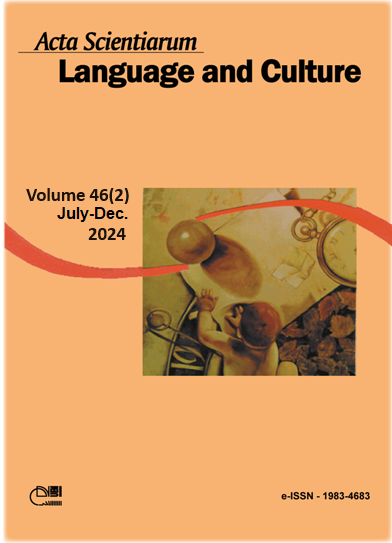Distopic women: feminine representations in We and The Hunger games
Abstract
This paper aims to compare the representations of women in the novels We, by Yevgeny Zamiátin, and The hunger games, by Suzanne Collins, to examine how women are represented in dystopian literature and whether there are significant changes in these representations in the 20th and 21st centuries and how they influence the construction of the dystopian novel. The study was based on feminist and cultural theories, which helped to understand the processes of oppression and resistance present in the characters O-90 and I-330 in Zamiátin's novel and Katniss Everdeen in Suzanne Collins' narrative. The study concludes that, in classic dystopias, women were often portrayed in a stereotyped and unimportant way, despite being essential to the development of the plot, while in more recent works they play a leading role, both in the writing and as characters. However, they are still held responsible for the mistakes they make and suffer greater repression than men. Finally, by placing the characters side by side, it was possible to understand that women are of paramount importance to the construction of dystopia as literature, because they are the most critical characters within the plot, who make it possible to fulfill the dystopia’s premise: to build critical thinking in its reader from an exaggerated reality.
Downloads
References
Referências
Baker-Smith, D. (2012). Introduction. In T. More, Utopia (p. xii-xxxvii). London, UK: Penguin.
Borges, R. (2019). Prefácio à edição brasileira. In B. Hooks, Olhares negros: raça e representação (p. 8-22). São Paulo, SP: Elefante.
Cixous, H. (2022). O riso da medusa. Rio de Janeiro, RJ: Bazar do Tempo.
Claeys, G. (1999). The utopia reader. Nova York, NY: New York University Press.
Claeys, G. (2017). Dystopia: a natural history. Nova York, NY: Oxford University Press.
Coelho, T. (1987). Arte e utopia: arte de nenhuma parte. São Paulo, SP: Brasiliense.
Collins, S. (2012). Jogos Vorazes. São Paulo, SP: Rocco.
Federici, S. (2019). Calibã e a bruxa: mulheres, corpo e acumulação primitiva. São Paulo, SP: Elefante.
Hobsbawm, E. (1996). The age of extremes: a history of the world, 1914-1991. New York, NY: Vintage.
Hooks, B. (2019). Olhares negros: raça e representação. São Paulo, SP: Elefante.
Huxley, A. (2014). Admirável mundo novo (22ª ed.). São Paulo, SP: Globo.
Kellner, D. (2001). A cultura da mídia. Bauru, SP: EDUSC.
Orwell, G. (2019). 1984. São Paulo, SP: Companhia das Letras.
Roemer, K. (2010). Paradise transformed: varieties of nineteenth-century utopias. In G. Claeys, The Cambridge companion to utopian literature (p. 79-106). Cambridge, UK: Cambridge University Press.
Vieira, F. (2010). The concept of utopia. In G. Claeys, The Cambridge companion to utopian literature (p. 3-27). Cambridge, UK: Cambridge University Press.
Woolf, V. (2019). Mulheres e ficção. São Paulo, SP: Penguin-Companhia.
Zamiátin, I. (2020). Nós. São Paulo, SP: Aleph.
DECLARATION OF ORIGINALITY AND COPYRIGHTS
I Declare that current article is original and has not been submitted for publication, in part or in whole, to any other national or international journal.
The copyrights belong exclusively to the authors. Published content is licensed under Creative Commons Attribution 4.0 (CC BY 4.0) guidelines, which allows sharing (copy and distribution of the material in any medium or format) and adaptation (remix, transform, and build upon the material) for any purpose, even commercially, under the terms of attribution.
Read this link for further information on how to use CC BY 4.0 properly.




















6.png)









